Print History: A compositor’s tale - Tvarita Mudrana or Speed Printing
It is very rare for members of the printing trade who begin their careers at the bottom rungs to write about their experiences. The grind and hustle of the print rooms of the 1940s is accurately depicted in FS Bhandage’s Kannada autobiography
22 Dec 2023 | By Murali Ranganathan
Gadag, perched on the Hubli-Guntakal branch line of the metre-gauge Madras &Southern Mahratta Railway, epitomised the small town in the Bombay Presidency. The economy of the region, known as Bombay Karnatak, was fuelled by tobacco and cotton. With a population of 56,000 in 1941, it was one of the larger towns in the region. In the east, Dharwar had emerged as the hub of education for the region while Hubli was its business centre. Going south, Davangere had large cotton textile mills and oil extraction mills, while Gadag had innumerable beedi manufacturing units. Its industrial economy, largely based on processing agricultural goods, generated enough business to justify the existence of a flourishing print industry. By the 1930s, Gadag had emerged as a major print centre in the Bombay Karnatak. Besides a few large printing presses such as Satyaprakash Chhapkhane and Rasika Ranjini Printing Press that printed books and newspapers, Gadag could boast of nearly fifty job printing presses.
Even though electricity had reached Gadag in the early ’30s, most of these presses relied on human motive power. They needed workers who had the stamina to work long hours in harsh conditions. Most of them were barely literate and could hardly read the texts they composed or printed. Though the printing trade required special skills for composing the texts, operating the printing machines, and binding the books, these workers were neither well paid nor well regarded. They drifted in and out of the print trade and a constant supply of fresh blood was needed. The typical candidate was a local boy in his mid-teens who had dropped out of school. Like F S Bhandage.
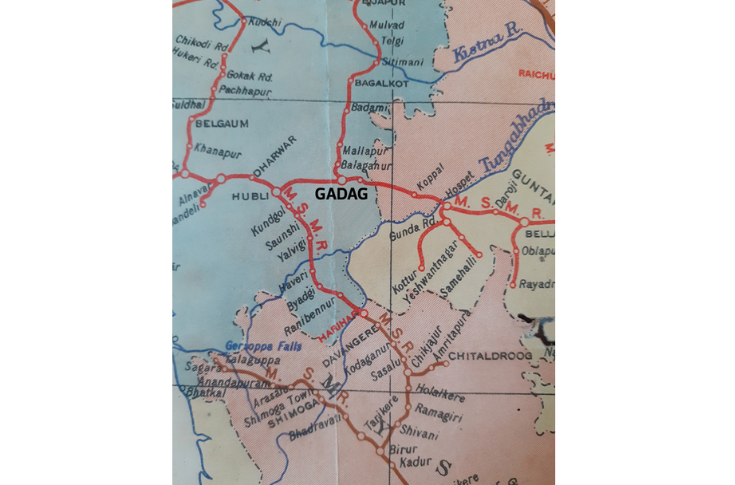
Gadag on the Madras & Southern Mahratta Railway, 1950
Fakeersa Shivannasa Bhandage (1931–2009) was born in Gadag in a family of middling circumstances. Though he had an inquisitive mind and was a voracious reader from childhood, Fakeersa did not do well at school. He moved from one school to another but could not complete his matriculation. Nor could he acquire more than a smattering of English and Hindi. Fakeersa began to work to supplement the family income while he was at school. Fakeersa’s first job was as a part-time assistant in a library run by the Maharashtra Mandal in Gadag which paid him four rupees a month. He was delighted with the prospect of reading books at the library but was disappointed when he discovered that it only had books in English and Marathi. He did not last long at the library. He ran through a variety of jobs in quick succession: as a bellows-boy in a pottery, as a menial servant in a flour mill, and as dogsbody at a commission agent’s shop. The wages were paltry, and in some cases, he was expected to work without pay as an apprentice.
At home, the situation had become precarious by the mid-1940s. When his father lost his job as a purchase agent, Fakeersa dropped out of school for the last time. It was time he picked a trade which would provide him with an assured livelihood. A cousin suggested that Fakeersa join him in the printing press where he worked. Fakeersa would get trained as a compositor but would only get paid after he had picked up the skills to do book composing work. This was as good a trade as any other and Fakeersa readily agreed. The very next day, Fakeersa accompanied his cousin to the printing press.
Learning the trade
As he set out with his cousin the following morning, Fakeersa was in a contemplative mood. He had never been inside a printing press before, much less seen or heard a printing machine working. As they neared the press, a rhythmic clang could be heard in the distance. This was Fakeersa’s first introduction to print. As he entered the press, housed in a building made of mud, Bhandage got a first look at a printing machine:
A series of printing machines were arranged on the left. A black-coloured printing machine was being operated by an equally dark-hued printer. One of his legs was on the floor while the other was poised on a pedal, which set in a motion a big wheel attached to the machine. The upper part of the machine had two jaws which opened and shut at a very high speed. In one fluid motion, the printer would take out the printed sheet with his left hand when the jaws opened and insert a blank sheet with his right hand. This operation needed to be done quickly else there was a risk that a hand would get stuck within the jaws.
Fakeersa joined as an unpaid trainee in the composing room of Thottappaiya Shastri’s press under the guidance of Hanumantsa, the senior compositor. He also had cleaning duties in the press for which he was paid two rupees a week. On the other hand, an experienced compositor could expect to be paid 20 annas everyday. Within a short period of four weeks, Fakeersa gained enough proficiency to be assigned paid work. Fakeersa began to work like a man possessed, cutting short his lunch and tea breaks to compose an extra page by the end of the day.
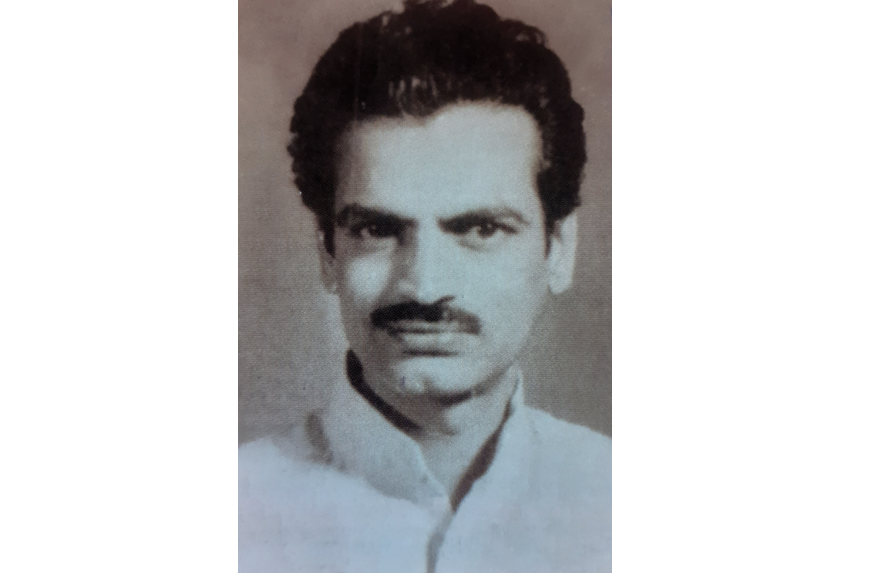
Fakeersa Shivannasa Bhandage (1931–2009)
At the end of the day, he would go to the print room where the printer, Poodarappa, began to teach him how to work on the treadle press. With the advent of the almanac season, he began spending nights in the press assisting the printer. He was paid four annas per 1,000 sheets. He would print 2,000 sheets every night before curling up in a corner of the press. Since he was rather a diminutive boy, he had to stand on a box to place the paper in the press. This prevented him from easily accessing the foot pedal. To increase his speed of printing, he hired a blind man who had worked with him in the flour mill, to operate the pedal. Once they got into a rhythm, they could print 6,000 sheets every night, much to the amazement of the proprietor. But once the almanac season ended, Fakeersa’s earnings diminished. From earning 12 rupees a week, he was down to three rupees. Fakeersa needed to find a press which could offer him work for two shifts. Instead of just walking out, he informed Thottappaiya Shastri of his decision to leave the press. In an industry where employees just disappeared, Shastri appreciated the gesture and presented him with a gratuity of ten rupees.
Fakeersa began working at the Karchyu Press which offered him five annas per 1000 sheets. He hoped to print around 10,000 copies everyday so that he could earn at least 15 rupees weekly which was more than an educated clerk’s salary. Fuelled by beedis and tea, he began to work like a maniac. However, within a few months, his knees began to pain terribly. He could barely stand, much less work on a printing machine. Operating a treadle press had exhausted Fakeersa and worn him out. He thought it better to stick to composing.
Becoming a newspaper compositor
As he was recovering his health, a friend told Fakeersa that two printing presses were looking to hire him. They had heard about his reputation for speedy and accurate composing on the market grapevine. The Karnataka Bandhu Press printed the weekly newspaper, Karnataka Bandhu, while the Rudra Vilas Press printed books related to astrology and religion. Fakeersa would work through the day at Rudra Vilas Press, composing six pages everyday. From 6 pm to midnight, he would compose the Karnataka Bandhu newspaper where he would be paid four annas per column.
Composing for a newspaper was very different from composing a book. The columns were half as wide but twice as long. The matter to be composed was hurriedly handwritten in a careless hand. Fakeersa initially found the matter hard to decipher but could appreciate that it was written by a learned man. Soon enough, he was not only correcting the spellings and grammar but also copy editing the text. One evening, he saw a weather-beaten, long-haired, lean man waiting for him at the press. It was Karveera Mummigatti, the editor of Karnataka Bandhu who wrote the matter for the newspaper. He was all praise for Fakeersa: he had never seen such accurate composition with barely any corrections. He also appreciated all the changes which Fakeersa made to the text.
If there was a shortfall in the matter for the weekly edition, Fakeersa would rustle up additional matter himself. Often, he would translate articles from Hindi newspapers into Kannada. At the suggestion of the newspaper proprietor, he began to directly compose the translated text instead of first writing it down. However, the arduous work conditions and the dim lighting in the composing room began to hurt his eyes. A doctor advised him to stop working night shifts if he wanted to retain his eyesight.
As WW2 wound to a close, food prices doubled and rationing was introduced. Even the sale of cotton was regulated. The wages in printing presses were also depressed. Fakeersa gave up composing and became an itinerant salesman for tooth powder and patent medicines. He would travel to remote villages around Gadag where these products were in demand. However, when a drugs inspector began to make enquiries, the business wound up. Fakeersa was back home again.
A sojourn in Bijapur
As the British planned their departure from India, announcements were made for one last election in colonial India which were conducted in January 1946. Since the elections to the provincial assemblies were last held in 1937, the electoral rolls had to be revised and new voter lists printed. The contract for printing the voter lists for Bijapur district were given to printers in Bijapur. They neither had the necessary types nor the experienced compositors.
One afternoon, an unexpected visitor arrived at Fakeersa’s house. He was Gudagunti, manager of the Murugendra Press at Bijapur. When he had gone to buy the types in Hubli and asked around for compositors, he had heard of Fakeersa and his speed compositing skills. He needed a team of four compositors to work on the composition of electoral rolls for a month or so. Gudagunti offered Fakeersa generous terms and thrust a substantial advance into his hands after extracting a promise from him to board the night train to Bijapur with three other compositors. When he went to gather the others, he learnt of an equally lucrative offer for the same work from Mirji, owner of the Udaya Press at Bijapur. Gadag seemed to have plenty of unemployed compositors and two teams of four compositors reached Bijapur to work at both the presses. With Fakeersa went his composing guru, Hanumantsa, and his erstwhile colleagues, Bhimanna and Basavanna.
The Murugendra Press offered the Gadag compositors a rate of Rs 2-50 per page. They would lodge at the press and boarding would be part of the package if they worked until midnight. While the others would begin work at nine in the morning after a hearty breakfast, Fakeersa began composing from five in the morning with his trademark speed. While the rest would compose five pages of the electoral roll everyday, he would manage six or seven. By the end of six weeks, when the work was completed, Fakeersa had earned a quarter more than the rest. He returned home to Gadag after earning a princely sum of five hundred rupees and loaded with presents for his family.
A newspaper seeks refuge
India’s independence in August 1947 was a mere blip in the teenager’s life but turmoil across the border in the princely state of Hyderabad did influence his fortunes. The Nizam’s territory included the Hyderabad Karnatak where Kannada was spoken. After Qasim Razvi and the Razakar militia unleashed mayhem in the region from December 1946, a steady flow of refugees began to arrive in Gadag. And among them was Raghavendra Jagirdar, the proprietor-editor of the newspaper, Praja, who strongly advocated Hyderabad’s accession to India. He had managed to shift his printing press to Gadag; it was housed in the same premises as the Rasika Ranjini Printing Press. A compositor had to be hired locally. And the choice fell on Fakeersa. He was offered a salary of seven rupees per week plus overtime and a daily tea allowance of two annas.
The Praja Press became the first port of call for refugees arriving in Gadag from the Hyderabad Karnatak. The premises were constantly crowded with families seeking succour. The first few months were very hectic as the makeshift team struggled to publish the weekly Praja. The newspaper mainly documented the plight of the refugees and the situation in Hyderabad state which was getting worse by the day. Some copies perhaps found their way back to the Nizam’s territory. Fakeersa was completely involved in the production of the newspaper and often stayed in the premises overnight. However, this situation could not persist for long.
One early morning in September 1948, as Fakeersa walked along the railway tracks in Gadag for his morning ablutions, he saw trains packed with armed military personnel going towards the Hyderabad border. And soon enough, in a few days, the local newspaper, Samyukta Karnataka, carried the headlines: “Nizam Surrenders!” The state of Hyderabad was now part of India. A few weeks later, the Praja newspaper made a triumphant return back to Hyderabad. And Fakeersa was out of a job again.
Becoming a printer
For a few months, he commuted daily by train to Hubli to work at the press which printed the Navayuga newspaper. The manager at the press was so impressed with Fakeersa’s erudition, a rarity among compositors and printers, that he upgraded him to a proofreader. However, Fakeersa tactfully refused the promotion as he felt that a proofreader had narrower prospects than a compositor in a fractious industry with no assurance of tenure. But there were other changes in his life that were inevitable. Taller and sprouting a moustache, he had outgrown his short pants. He now wore a dhoti paired with a Nehru shirt. Fakeersa had become Bhandage.
When the New Karnataka Printing and Publishing House was set up in Gadag, they recruited Bhandage as a compositor for Kalki, a magazine of religion and spirituality. He was paid forty rupees a month. The magazine had a heavyweight editorial team but that did not help it gain subscribers. From being printed weekly, it became a monthly, and eventually shuttered down. Bhandage was unemployed once more.
After working for five years as a compositor in innumerable presses, Bhandage had grown weary of the precariousness of the printing trade. Wouldn’t it be better if he had his own press? But where was he to get the necessary funds? His life savings amounted to a mere 180 rupees. As luck would have it, an acquaintance offered him a hand-operated table-top press, the smallest printing machine in the market, for 300 rupees. He could initially start off by printing beedi labels and gradually acquire the Kannada types required to print textual matter. He would still need to invest around 500 rupees. Bhandage managed to convince his mother to give him 250 rupees from her stash of savings. With the money in his pocket, he went to Davangere to inspect and purchase the press.
Bhandage had never seen such a press before. It was love at first sight for him. The press looked like a treadle press with its ink plate and two jaws. Instead of a pedal to drive the flywheel, it had a lever which had to be operated by hand to obtain impressions on the paper. While only a single sheet could be placed in a treadle press, 10-12 sheets could be inserted at one go in this press. It was kept on a sturdy table with a thick teak wood base. When the lady who was selling the press demonstrated how the press worked, he was reassured. Without a second thought, he bought the press and had it transported to Gadag. He could hardly wait to begin printing.
At Gadag, Bhandage rented a small room, six feet wide and eighteen feet deep, to house the press. At his mother’s insistence, he organized a formal function to have the press blessed and anointed. He had invited two prospective customers who owned beedi factories for the event. One of them, Gangasa who ran Ramasa Beedi, had just had a tiff with his printer and repossessed the label printing blocks. Gangasa immediately commissioned Bhandage to print beedi packet labels.
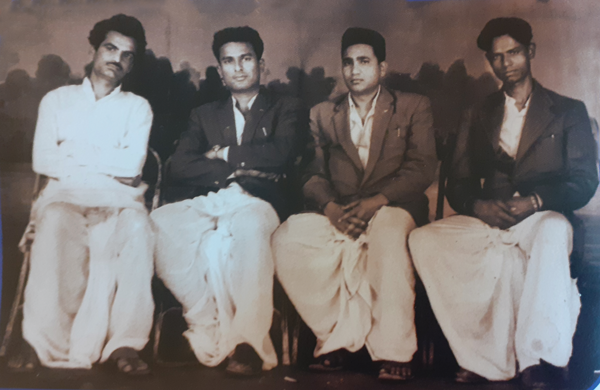
Bhandage (extreme left) with colleagues, circa 1960
Bhandage was given a sample of the label, the block necessary for printing the label and a ream of paper ordered from the local Marwari shop. Bhandage had the paper cut to size and bought red ink and began work in right earnest. An assistant was requisitioned to operate the lever. Bhandage had to take a few trials to get the inking right. When all the parameters were set, there was no stopping him. The first 500 copies were printed in twenty minutes. They worked through the night and the next day and completed the print run of 40,000 copies. When the labels were delivered to Gangasa, he was astounded by the speed of delivery and the high quality of printing. His earlier printer would not print a 1000 labels even if he himself waited at the press for a day. Bhandage received his first printing income: a sum of eighty rupees at the rate of one rupee for 500 labels.
However, except for the stray order or two, beedi manufacturers in and around Gadag did not give any print orders to Bhandage. None of them wanted to disrupt their relationships with existing printers like the reputed Munshi Press. One of Bhandage’s neighbours sold songbooks or padyavalis at film screenings. He would transcribe the songs in Kannada and get them printed locally. These eight-page booklets were priced at one anna. In a spirit of neighbourliness, he asked Bhandage to print the songbook for the super-hit film Chandralekha. He would also lend Bhandage 600 rupees for the purchase of types.
An enthused Bhandage bought types worth 1200 rupees from a newly established type foundry in Hubli by paying an advance of 50 percent. He hurried back to Gadag with the types to commence printing. Bhandage quickly composed four pages of the text and mounted the galley on the press and began printing. But no impression appeared on the paper. He applied more pressure on the lever but the paper was merely smudged with ink. Bhandage panicked. What had gone wrong? Printing experts were called in. The verdict was that the hand-operated press could just not generate the pressure required for letterpress printing.
Bhandage was in a pretty pickle. The types were sold as scrap to the type foundry for 600 rupees to square their account. This left Bhandage with a debt of 600 rupees to his neighbour. Providentially, a few days later, the Hubli Khadi Bhandar wanted an in-house press to print labels and offered 300 rupees for the press. As the machine was carted away, Bhandage was distraught: “Tears streamed down my cheeks. As I saw the machine going away, a dark shadow fell on my face. I recalled how excitedly I had bought the machine and felt very sad.” But Bhandage could not afford to mourn for long. He had to find a job soon.
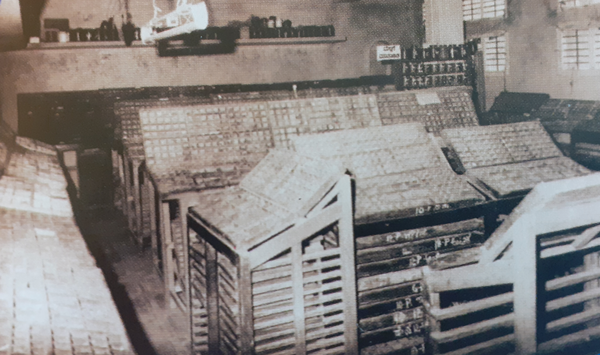
Composing room of Tvarita Mudrana, circa 1980
Life in a big city
As the state of Hyderabad was slowly integrated into the Indian union, it had to be prepared for elections. In 1950, voter lists were compiled which had to be printed. The Sadhana Press had won the contract to print the electoral rolls for the Hyderabad Karnatak districts and needed compositors in that language. They sent their representative, Ishwarappa, to Gadag to recruit compositors. As Bhandage was despondently roaming the Gadag streets after closing his printing press, he ran into Ishwarappa, who, in a single breath, explained the situation and gave him an advance of 300 rupees. Eight compositors boarded the train from Gadag for Hyderabad that night.
The Sadhana Press was constructed on a large scale. The brightly lit composing room could accommodate forty compositors. The press had its own type foundry and an immense quantity of type. Bhandage, an old hand at electoral rolls, began composing with his customary speed and completed 700 lines on the first day. But it was not all work for the compositors. They were free to explore the city on Sunday afternoons. They could visit the famed Salarjung Musuem or the zoo; they had a choice of feature films; or, they could sample the attractions of the its famed red light areas. Bhandage preferred to listen to lectures in Kannada and browse used books in roadside stalls. After six weeks of breakneck composing, which left him with aching shoulders and sore eyes, Bhandage earned 650 rupees. This was enough to clear his debts and make a fresh start in life as an adult.
Epilogue
For Fakeersa Shivannasa Bhandage, theatre was life; printing merely livelihood. In his 2008 Kannada autobiography, Yaaru Naanu? Jeevana Kathana (Who am I? A Life Story), he describes his evolution both as a playwright and as a printer. He first made his name in the printing world as the speedy boy compositor but was soon recognised for his theatre activities.
All through the 1950s and ’60s, Bhandage worked as a compositor. If he worked on a salary, he could earn between 10 and 15 rupees per week. It was a hard grind with long working hours and tough living conditions. The occasional lucrative assignment would relieve months of sparse earnings. It took him to many places: a year in Jamkhandi, a few months in Raichur, many years in Bangalore, a few days in Sangli, and numerous stints in Hubli. The only assignment which delighted him was when K Shivaram Karanth, the doyen of Kannada literature who printed his own books, invited Bhandage to Puttur to compose his book, Yakshagana, in 1957. Bhandage looked upon those few months, when he was pampered by Karanth’s wife and could use his extensive library, as a heavenly interlude.
After twenty-five years in the print trade, Bhandage again aspired to be a printer and founded the Vidyavahini Vidyunmudrana. The 1970s and ’80s saw an upsurge in the printing of Kannada books and Bhandage was well-positioned to profit from this boom. He printed textbooks (which had print runs of 100,000 and more), encyclopedias, dictionaries, novels, annual reports for the Karnataka government and much else. His printing press eventually acquired a name which had always been his signature tune: Tvarita Mudrana or Speed Printing.
I am indebted to my father, B Ranganathan, who read the Kannada autobiography, identified the sections related to printing, took extensive notes, and translated them into English. I am also grateful to Manjunath Naragund of Gadag for drawing my attention to the book.




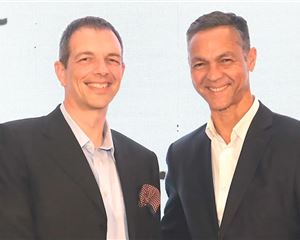

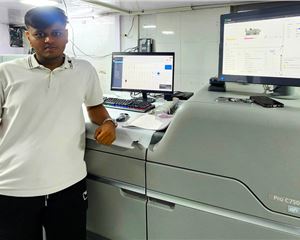





 See All
See All